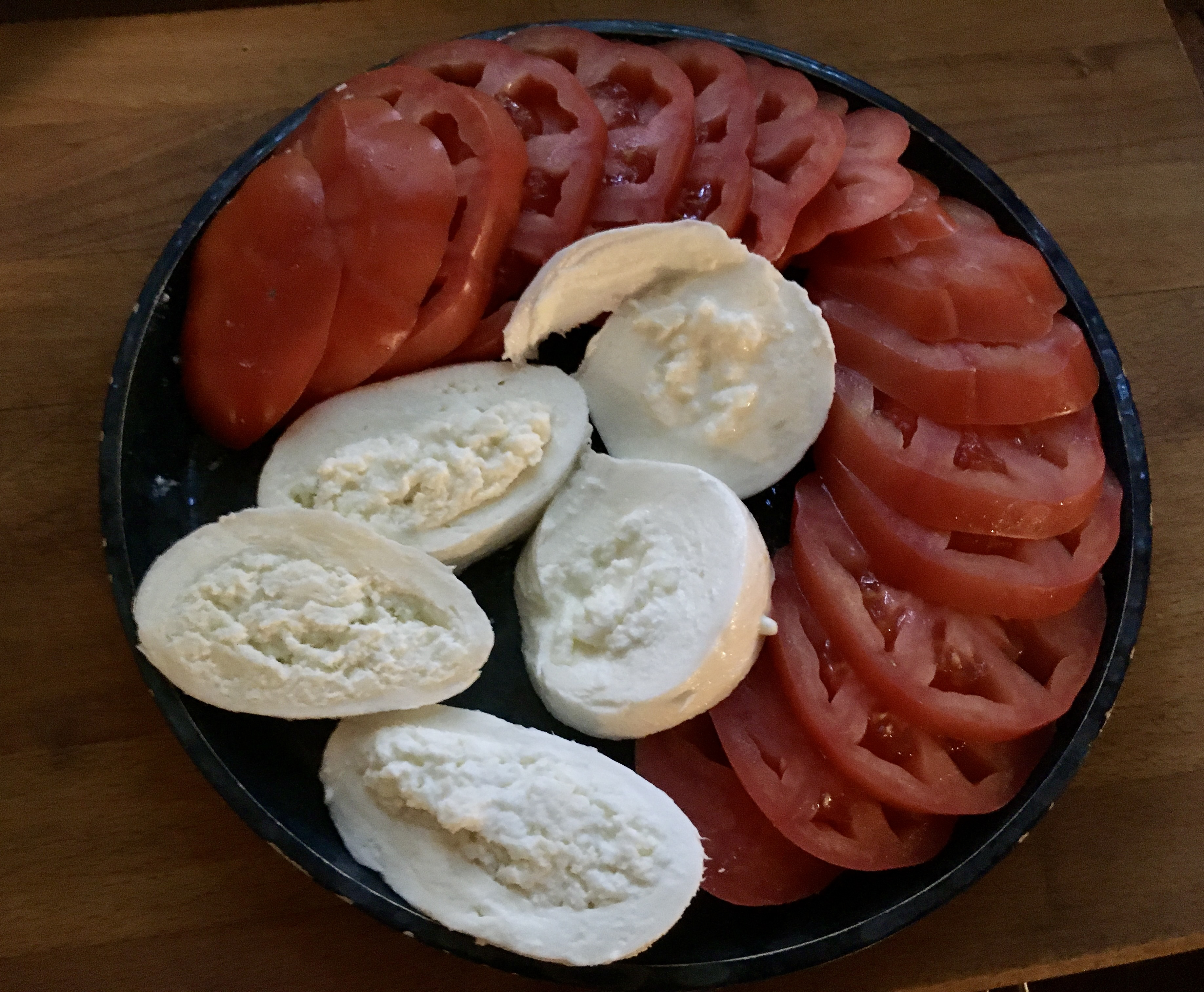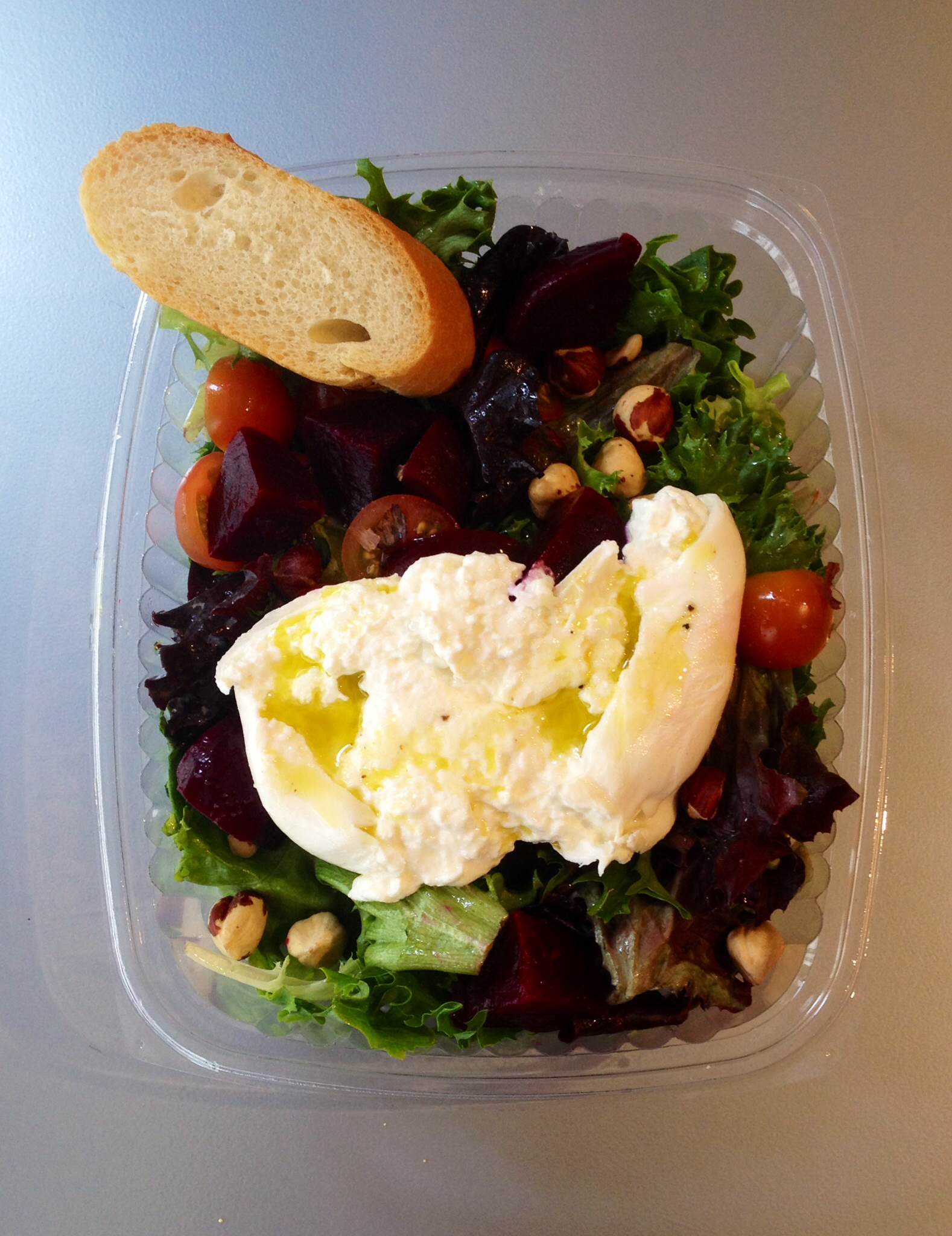Burrata on:
[Wikipedia]
[Google]
[Amazon]
 Burrata () is an Italian cow's
Burrata () is an Italian cow's
 Burrata starts out much like
Burrata starts out much like
 Burrata () is an Italian cow's
Burrata () is an Italian cow's milk
Milk is a white liquid food produced by the mammary glands of lactating mammals. It is the primary source of nutrition for young mammals (including breastfeeding, breastfed human infants) before they are able to digestion, digest solid food. ...
(occasionally buffalo milk) cheese
Cheese is a type of dairy product produced in a range of flavors, textures, and forms by coagulation of the milk protein casein. It comprises proteins and fat from milk (usually the milk of cows, buffalo, goats or sheep). During prod ...
made from mozzarella
Mozzarella is a Types of cheese#Semi-soft cheese, semi-soft non-aged cheese prepared using the ('stretched-curd') method with origins from southern Italy.
It is prepared with cow's milk or buffalo milk, taking the following names:
* or mozz ...
and cream. The outer casing is solid cheese, while the inside contains and clotted cream, giving it an unusual, soft texture. It is a speciality of the Puglia
Apulia ( ), also known by its Italian language, Italian name Puglia (), is a Regions of Italy, region of Italy, located in the Southern Italy, southern peninsular section of the country, bordering the Adriatic Sea to the east, the Strait of Ot ...
region of southern Italy.
History
Burrata is a dairy product of Murgia, in Puglia in southern Italy. It is produced from cow's milk, rennet, and cream, and may have origins dating back to about 1900, produced at the Bianchino brothers' (Lorenzo and Vincenzo) farm in the town of Andria. More recent records have shown that Lorenzo Bianchino, of the Piana Padura farm, first developed the product in 1956. In November 2016, became a protected geographical indication (PGI) product. To qualify as burrata di Andria all operations, from the processing of the raw materials up to the production of the finished product, must take place in the defined geographical area of the region of Puglia. Established as anartisanal cheese
Artisanal cheese refers to cheeses produced by hand using the traditional craftsmanship of skilled cheesemakers. As a result, the cheeses are often more complex in taste and variety. Many are aged and ripened to achieve certain aesthetics. This ...
, burrata maintained its premium-product status even after it began to be made commercially in factories throughout Puglia.
Production
 Burrata starts out much like
Burrata starts out much like mozzarella
Mozzarella is a Types of cheese#Semi-soft cheese, semi-soft non-aged cheese prepared using the ('stretched-curd') method with origins from southern Italy.
It is prepared with cow's milk or buffalo milk, taking the following names:
* or mozz ...
and many other cheeses, with rennet used to curdle the warm milk. Unlike other cheeses, however, the fresh mozzarella curds are plunged into hot whey or lightly salted water, kneaded, and pulled to develop stretchy strings (), then shaped.
When making burrata, the still-hot cheese is formed into a pouch, which is then filled with the scraps of leftover mozzarella and topped off with fresh cream before closing. The finished burrata is traditionally wrapped in the leaves of asphodel, tied to form a brioche
Brioche (, also , , ) is a bread of French origin whose high egg and butter content gives it a rich and tender crumb. Chef Joël Robuchon described it as "light and slightly puffy, more or less fine, according to the proportion of butter and e ...
-like topknot, and moistened with whey.
As burrata does not keep well, even when refrigerated, it is advisable to use it promptly while it is still fresh.
See also
* List of Italian cheeses * List of water buffalo cheesesReferences
{{Italian cheeses Cow's-milk cheeses Cream cheeses Cuisine of Apulia Italian cheeses Water buffalo's-milk cheeses